Newsletter: SCI-Arc professors resign after school announces changes to internship, other policies
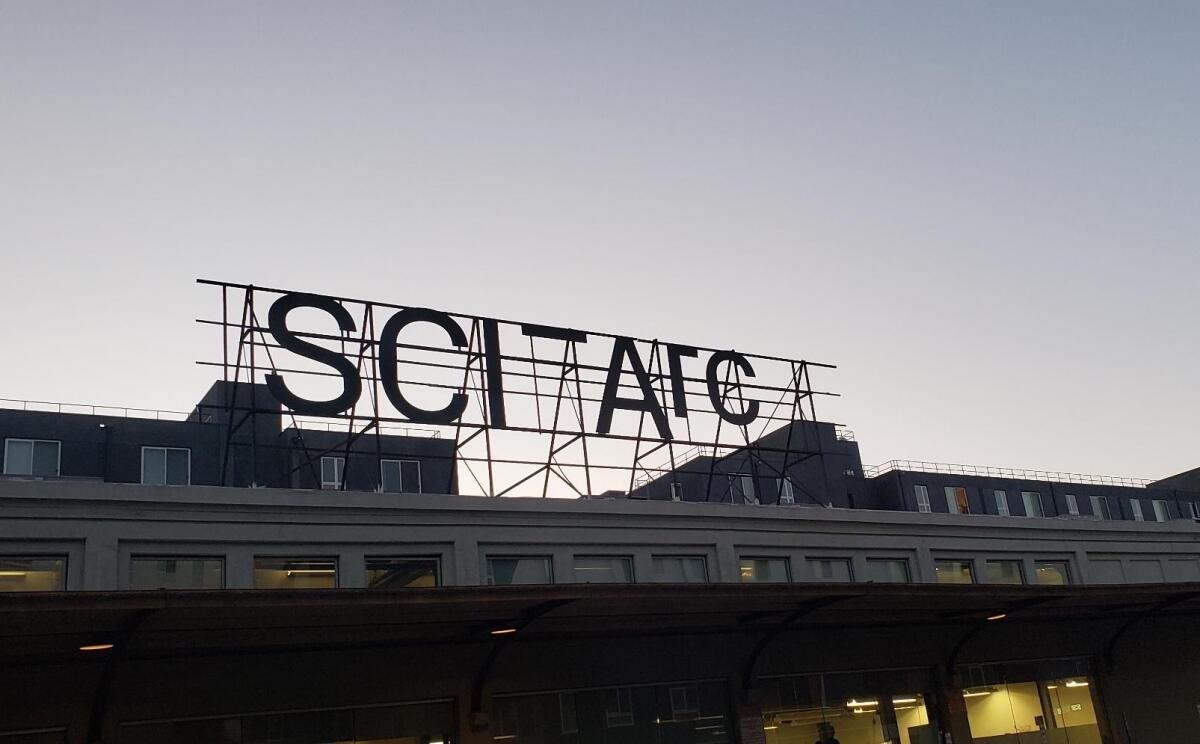
- Share via
The only news you need to know this week is that Lizzo played President Madison’s 200-year-old crystal flute — and twerked while she did it. OK, maybe it’s not the only news. I’m Carolina A. Miranda, art and design columnist at the Los Angeles Times, with the rest of the week’s essential arts news:
A needed revamp
For SCI-Arc, 2022 was supposed to be a year of celebration — marking the architecture school’s 50th anniversary. Instead, it has turned into a year of negative headlines over a scandal related to the ways in which some faculty employed student labor. Now, two staff members at the heart of the allegations — Tom Wiscombe and Marrikka Trotter — have resigned from the school. In addition, the school’s board of trustees announced this week a series of administrative changes.
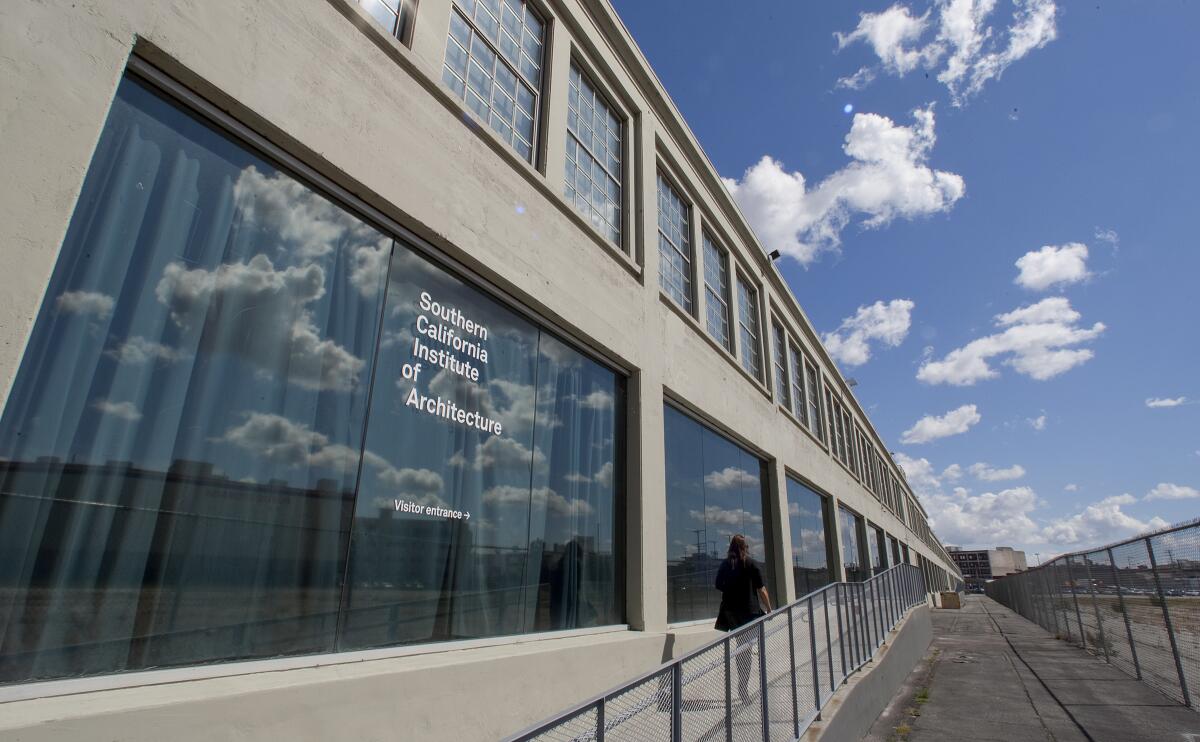
For the record:
11:00 a.m. Oct. 1, 2022A previous version of this newsletter said a 2018 Jo Ann Callis exhibit at Rose Gallery in Santa Monica was ongoing. Jo Ann Callis is not exhibiting at Rose Gallery. Photographer Caleb Stein’s “Down by the Hudson” exhibit is on view at the gallery.
The SCI-Arc controversy dates back to March, when students launched a petition calling for the ouster of Wiscombe and Trotter following a panel on professional practices in architecture. (That was an event I summed up in an April edition of this newsletter.)
Among the allegations were conflict of interest, favoritism and the mistreatment of students who worked as interns for Wiscombe’s firm, Tom Wiscombe Architecture, where Trotter is a senior associate. The students’ demands quickly inspired two other petitions, signed by faculty and alumni, demanding action from the administration. Wiscombe and Trotter were quickly put on leave, and the school’s director, Hernán Díaz Alonso, announced that the school would retain an external firm to conduct an investigation.
This incident — at one of architecture’s most famously avant-garde schools — generated a wider discussion within the field about labor practices. Specifically, about the numerous unpaid interns who often serve as the backbone of small firms, where they frequently help crank out designs and material for unpaid architectural competitions.
That is a situation I summed up in a follow-up report in August. (For the record, Wiscombe told me at the time that his firm has paid student interns for the last four years and, prior to that, unpaid internships were offered in accordance with SCI-Arc policy.)
But SCI-Arc’s policies have now gotten a revamp.
Make the most of L.A.
Get our guide to events and happenings in the SoCal arts scene. In your inbox once a week.
You may occasionally receive promotional content from the Los Angeles Times.
In a pair of letters sent to students, staff and alumni by Alonso, as well as Kevin Ratner, who chairs the board of trustees, SCI-Arc announced Wiscombe’s and Trotter’s resignations, along with a series of new policies governing internships and the distribution of scholarship moneys. (One of the allegations was that Wiscombe and Trotter wielded a high degree of control over who received scholarship money — often with little transparency.)
The new rules require that internships taken for credit must be paid at no less than minimum wage and comply with state and federal labor laws. They also prohibit students from working for faculty members while they are enrolled in their courses. Other changes include additional layers of review for student scholarships and the appointment of a career services advisor, who will conduct exit interviews with students at the completion of professional internships.
Other processes also are up for review. In his letter, Díaz Alonso wrote, “We recognize that societies aren’t static, and neither are industries. Disciplines need to evolve and adapt, and we are committed to being part of the guidance in architecture.”
In an Instagram post, the anonymous SCI-Arc alum account, @basedcampalum, expressed disappointment in the findings — stating that the memos displayed “a continued lack of transparency and accountability.” SCI-Arc did not name the firm that conducted the study, nor did it make the report — or a summary — available for review.
But, as someone who has been a labor organizer, I will say that sometimes small procedural shifts can have significant cultural impact over time. In the case of SCI-Arc, there is now a person for students to turn to if things go awry and there is a recognition from an important institution that people should earn — at the very least — minimum wage for their work. (Architecture is now as enlightened as fast food!)
That alone isn’t going to transform a field whose practices are, as Sean Joyner has previously written, rooted in the master/pupil model of the medieval workshop. But it’s a shift from that mindset of self-sacrifice that has long predominated in architecture — that to succeed one must withstand the slings and arrows of the vaunted creative genius.
Genius is all well and good. But it don’t pay the rent.
Performance notes
The indefatigable John Williams may be 90, but it appears he is tireless. The “Star Wars” composer was honored by the L.A. Phil at its recent season-opening gala, where he took the stand to conduct his Second Violin Concerto, written for Anne-Sophie Mutter. “The concertos don’t sound like Williams’ film scores, but the medium suits him,” writes Times classical music critic Mark Swed. “He exults in the drama between a soloist and the orchestra, which he uses, as in his film scores, with great imagination and virtuosity.”
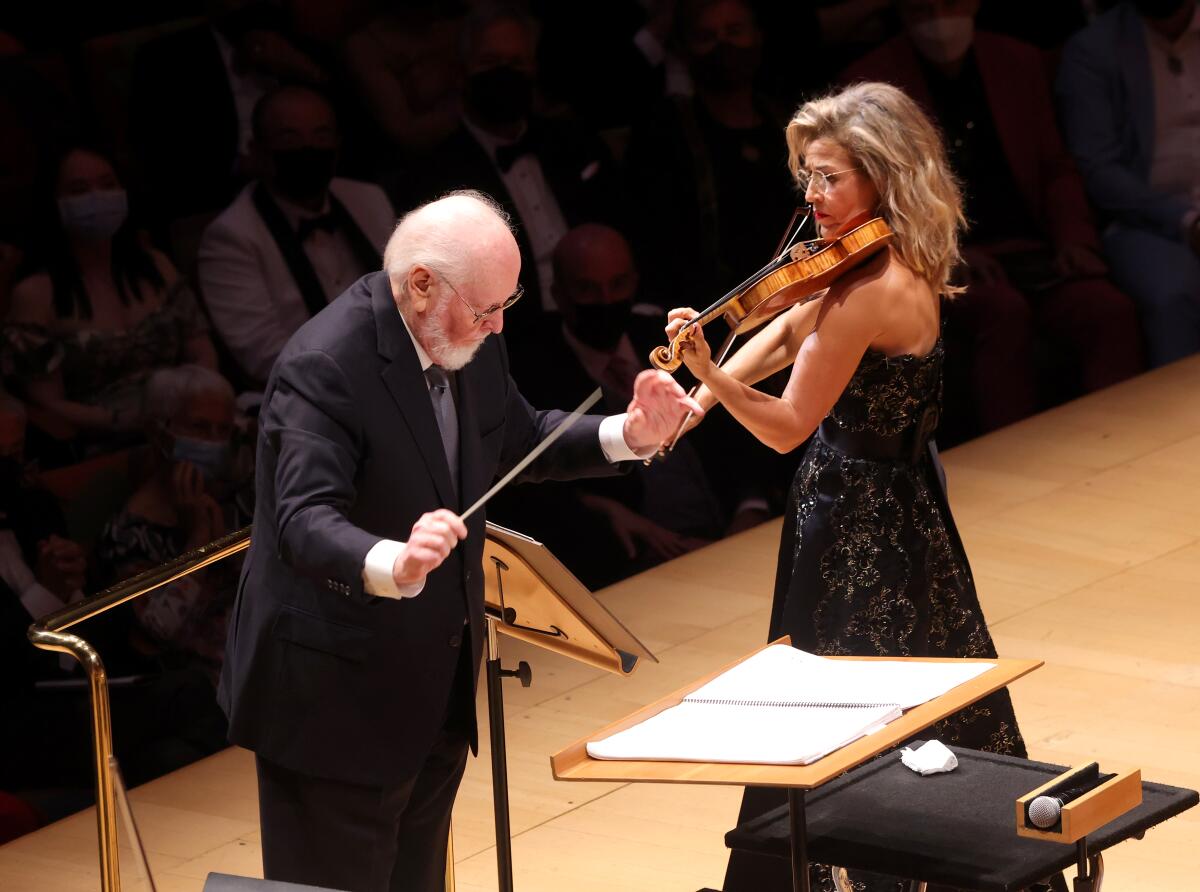
On and off the stage
Times theater critic Charles McNulty sat down with four actors in their 70s and 80s who have appeared in Branden Jacobs-Jenkins’ “Everybody” at the Gindler Performing Arts Center in Glendale — an experimental adaptation of the medieval morality play “Everyman.” Harry Groener, Anne Gee Byrd, Dawn Didawick and Alberto Isaac spoke with McNulty about “what maturity brings to actors who never stop challenging themselves.” Says Groener of getting older: “You learn simplicity, you learn economy, you learn you don’t need to have all this energy to tell the story.”
Enjoying this newsletter? Consider subscribing to the Los Angeles Times
Your support helps us deliver the news that matters most. Become a subscriber.
In Carla Ching‘s new play, “Revenge Porn or the Story of a Body,” currently playing at the Pico, lead character Kat Chan (played by Tina Huang) contends with the release of a stash of nude photographs by her ex-husband, and her subsequent debate on whether to take the high road or humiliate him in a more public way. “I am an Asian American woman in my 40s and I don’t feel like there are a lot of stories out there about us, certainly not about how we deal with relationships or sex or our bodies and sexuality,” Ching tells Times culture reporter Steven Vargas. “We’re just sort of forgotten about after we’re in our 20s when we’re young and beautiful.”
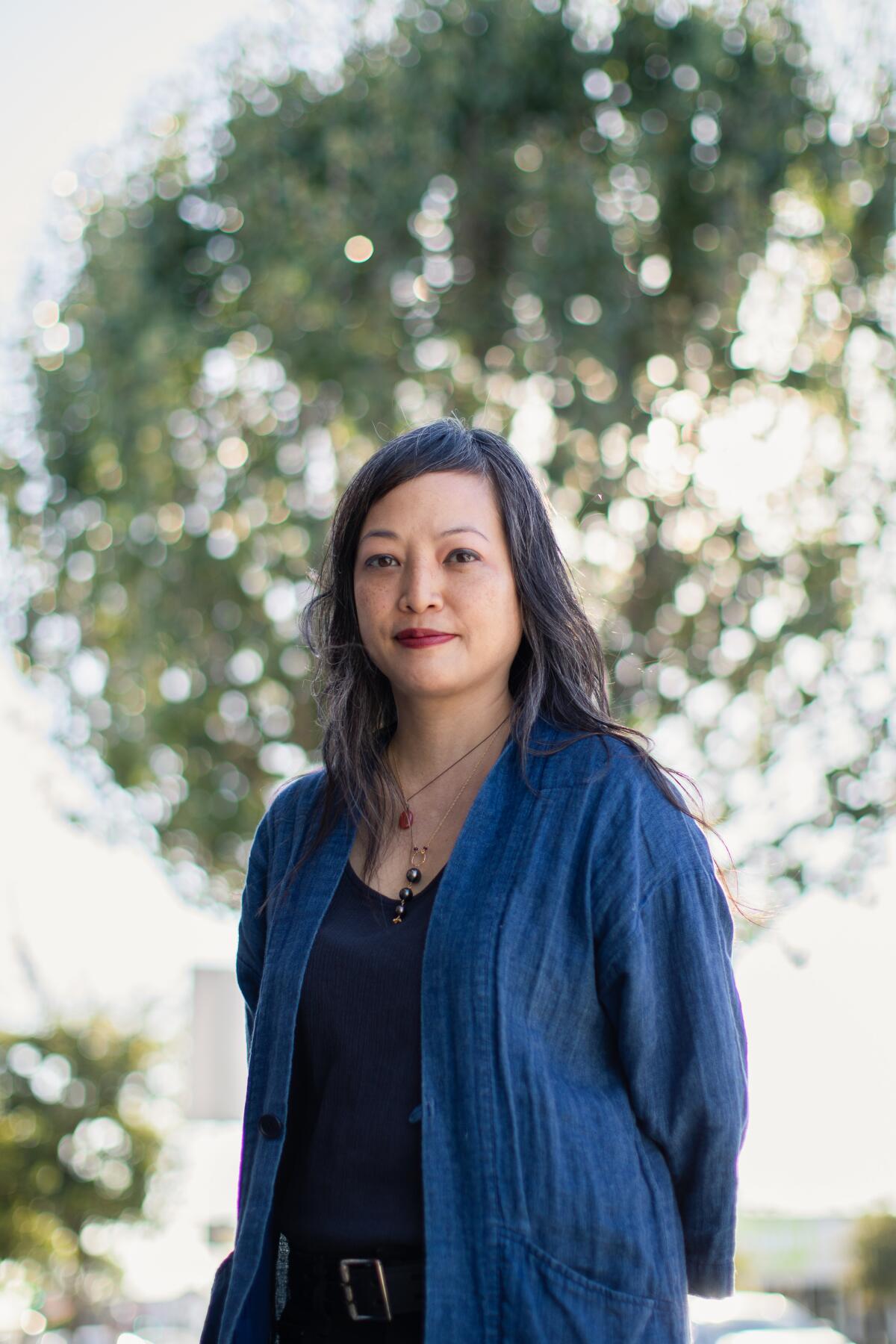
This is a good story from the New York Times’ Zachary Woolfe on pay-what-you-can ticketing — a way to make performances more affordable.
Plus, Gov. Gavin Newsom has signed a bill establishing the Performing Arts Equitable Payroll Fund to provide financial support to small, nonprofit performing arts organizations. Funding for this effort, however, is still TBD.
In the galleries
Times contributor Sharon Mizota digs into the legacy of a single photograph — a 1930 image of dancer Choi Seunghui curtsying before a camera — that appears in “The Space Between: The Modern in Korean Art,” at LACMA. The photograph, part of a short-lived cultural moment known as Sinyeoseong (or “New Woman”), represented “a jarring modernity entering traditional Korean society,” writes Mizota. “Here was a young woman with bobbed hair, wearing revealing Western clothing and posing coquettishly in a medium that had only been introduced to Korea in the late 1800s.”
ICYMI, art critic Christopher Knight reviewed the show last week.
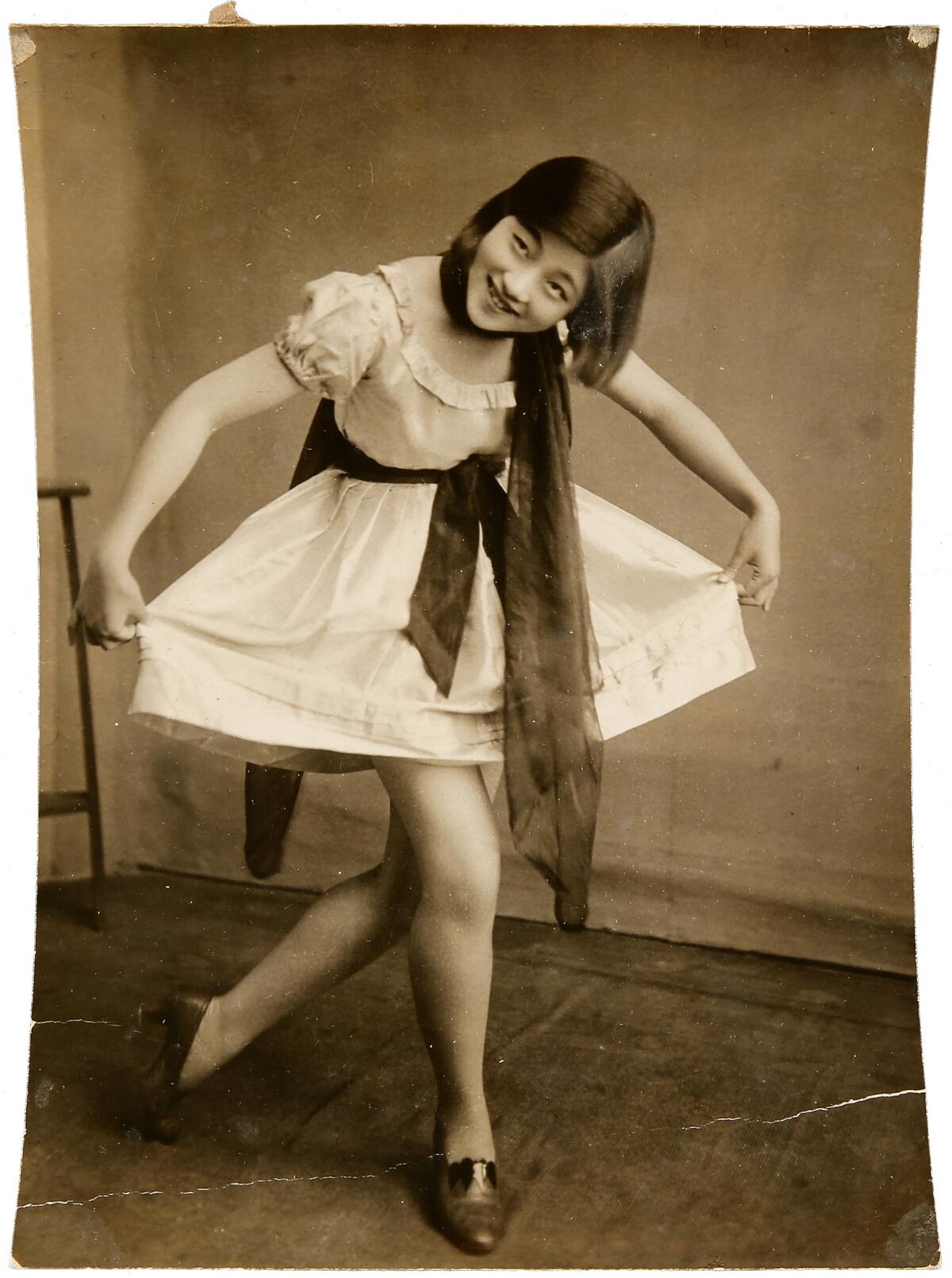
At Sprüth Magers, a show of work by L.A. artist Kaari Upson, who died last year from cancer, is currently on view. Hyperallergic’s An Xiao Mina has a look at the exhibition, which features some of the artist’s last works.
Just dance
At the Align Ballet Method, ballet isn’t simply the province of kids and professionals. The studio, founded in 2011 by Michael Cornell, is about making ballet “approachable for adults,” writes contributor Morena Duwe, who also practices dance there. “Through Cornell’s streamlined workshops, adults with zero experience are able to receive training that is not only novice-friendly but also welcoming and precise,” she writes.
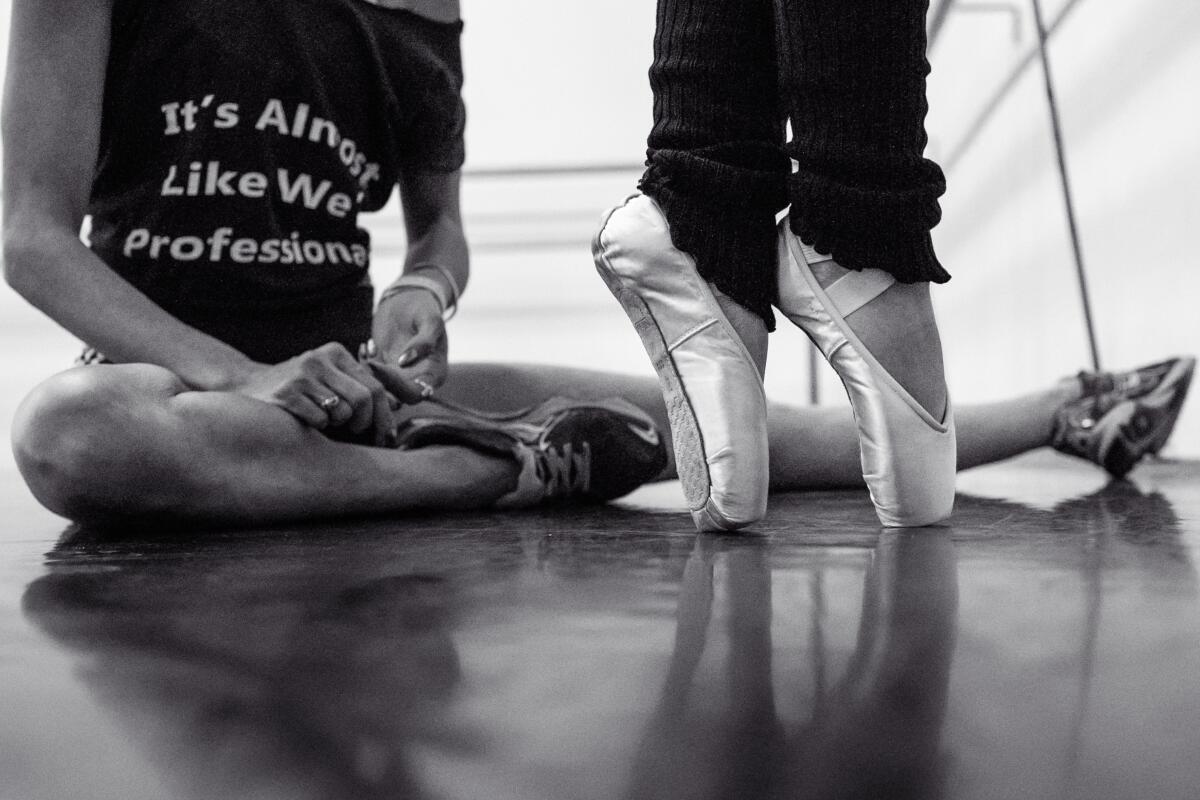
Essential happenings
Looking for something to do? Matt Cooper has all the latest goings-on in his continuously updated culture guide, including “Hamilton” at the Segerstrom Center and Octavio Solis’ “Scene With Cranes” at REDCAT.
Plus, a selection of Gardena High School‘s art collection is currently on view at the Palos Verdes Art Center. Blogger William Poundstone parses the collection — which was assembled with student input.
Moves
William de Kooning’s “Woman-Ochre,” famously stolen from the University of Arizona Museum of Art 37 years ago, is now back on display at the museum. (Christopher Knight wrote about the piece earlier this year when it was receiving some much-needed TLC courtesy of the Getty Conservation Institute.)
Yuval Sharon, a founder of experimental opera company the Industry and artistic director at Detroit Opera, has landed on the Time 100.
Nuyorican painter Juan Sánchez is the recipient of the Artists’ Legacy Foundation 2022 Artist Award, which comes with a $25,000 prize.
The National Academy of Design has announced the election of 17 artists and architects to its ranks, including L.A.-based conceptualist Edgar Arceneaux, composer Laurie Anderson and Rick Lowe, of Houston’s Project Row Houses fame.
The Hutchins Center at Harvard has honored a new slate of honorees with its W.E.B. Du Bois Medal. Among them are cultural critic Kareem Abdul-Jabbar and artist Betye Saar.
The Crenshaw Dairy Mart art space has announced a new fellowship for Black creatives. The inaugural recipients are artists Oto-Abasi and Juice Wood, along with curator Autumn Breon. Each will receive $100,000 and healthcare for one year for “envisioning the future of Inglewood through the Abolitionist framework.”
New York’s David Zwirner gallery has announced a partnership with literary magazine the Drift.
Passages
Pharoah Sanders, a legendary jazz saxophonist, known for his work as a solo artist as well as with figures such as John Coltrane, is dead at 81. Sanders helped define the so-called spiritual jazz movement.
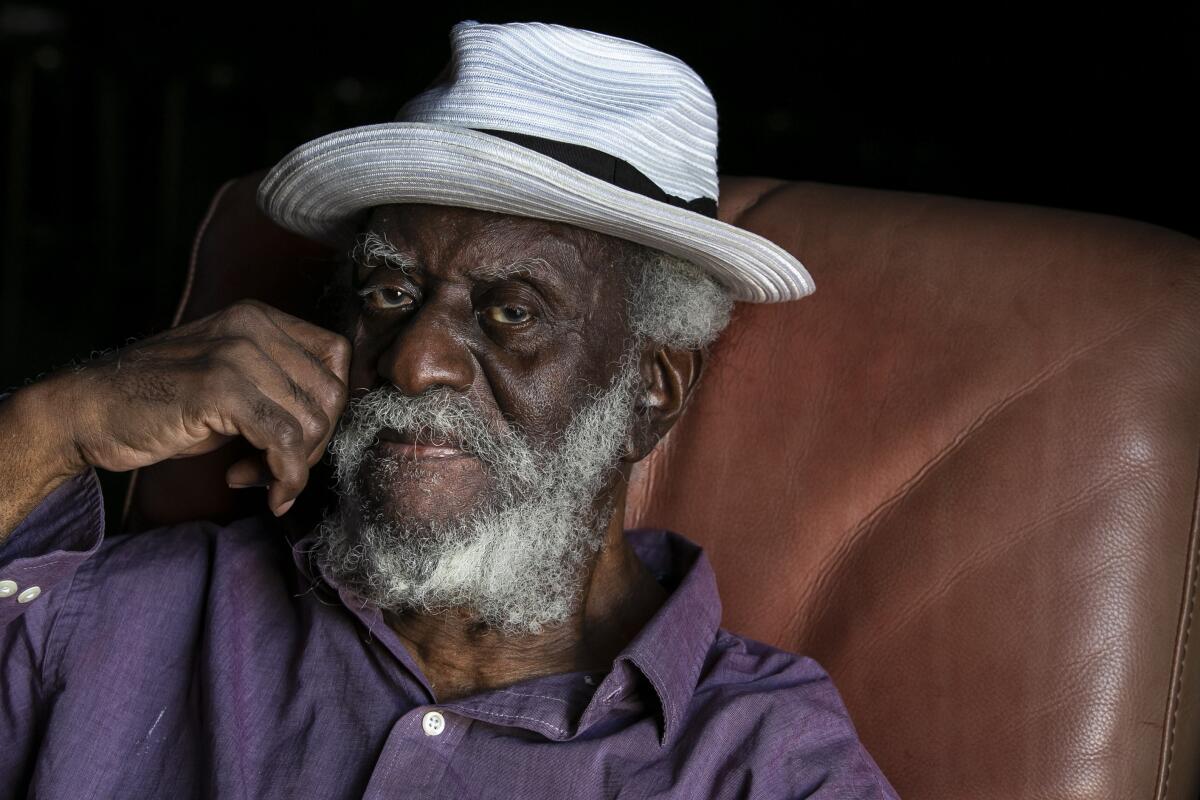
Sue Mingus, who was key in maintaining the legacy of her husband, jazz bassist Charlie Mingus — especially his innovative work as a composer — has died at 92.
Joe Bussard, who had one of the largest and most important collections of 78 rpm records in the U.S., has died at 86.
Sonia Handelman Meyer, a New York City street photographer affiliated with a left-leaning collective known as the Photo League, whose work enjoyed a late-in-life rediscovery, is dead at 102.
Fashion photographer Roxanne Lowit, known for her insider images of the fashion world, including backstage pictures taken at runway shows and private parties thrown by designers such as Yves Saint Laurent, has died at the age of 80.
Rita Gardner, who helped originate the sole female role of Luisa in the off-Broadway hit musical “The Fantasticks” in 1960, has died at 87.
In other news
— “Think of these buildings as spreadsheets bumped up to three dimensions,” Dallas Morning News architecture critic Mark Lamster writes about why everything looks the same.
— Pairs well with Amanda Mull‘s essay about the rise of the gray floor.
— How an underground skatepark in San Pedro became legal. Reminds me of a story I helped report for Time many years ago about how skatepark construction went from fringe activity to academic subject in landscape design programs.
— In England, a decommissioned oil drilling platform has been turned into a work of art.
— A buncha dudes tried to skate Michael Heizer’s “City.”
— My colleague Gustavo Arellano is hosting his annual Tortilla Tournament with KCRW and I contributed an analysis of tortilla package design.
— The Mexican government is investigating a Miami-based collector who claims he incinerated a drawing by Frida Kahlo as part of an NFT charity project.
— How artist Dries Depoorter uses Instagram influencer photos to make a point about surveillance.
— Art writer Aruna D’Souza has an interesting piece about the pioneering New York gallery Just Above Midtown, a key space for Black artists in the 1970s — and now the subject of a MoMA show.
— I’m really looking forward to sitting down with Namwali Serpell‘s new novel “The Furrows.”
And last but not least ...
I am here for any social media about stuffing two llamas into a taxi or the fake balconies at Latino grocery stores. (H/T to Eva Recinos on the latter.)
The biggest entertainment stories
Get our big stories about Hollywood, film, television, music, arts, culture and more right in your inbox as soon as they publish.
You may occasionally receive promotional content from the Los Angeles Times.




